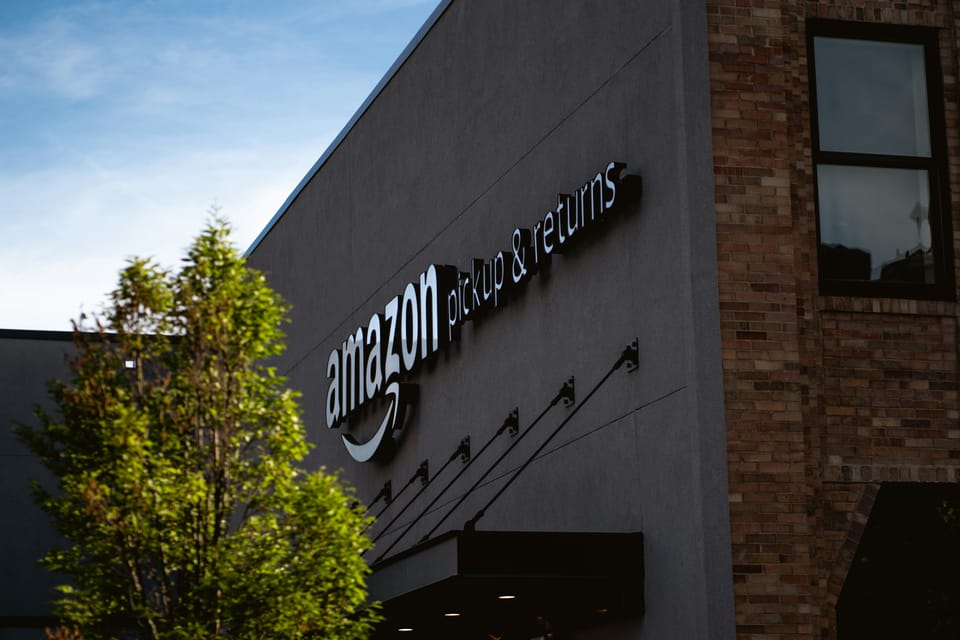Amazon claims 100% clean energy, but some criticise an inaccurate depiction

Amazon on Wednesday announced that effectively all of the electricity it used last year came from sources that did not emit greenhouse gasses, though some experts have criticised the company’s method of determining its footprint as being too lenient.
In the announcement on Wednesday, the tech giant said it had reached its goal of 100% clean energy in its operations seven years ahead of schedule. Amazon said it invested billions of dollars into some 500 solar and wind projects to achieve its target, and that the energy generated by those renewables is equivalent to the electricity it consumed in its energy-intensive data centres, corporate buildings, grocery stores, and fulfillment centers in 27 countries.
However, the solar and wind farms do not all directly power Amazon’s operations –in fact, most of that energy is sent to electricity grids that power homes and businesses. Some critics are saying the company’s calculations have created a misleading impression of its climate footprint.
The renewable energy projects Amazon has invested in can produce enough electricity to power the equivalent of 7.6 million homes, it said.
Like many big tech companies, Amazon has said that it wants to eliminate the climate-damaging effects of its business: Amazon aims to achieve net-zero carbon emissions from all of its operations, including its means of delivery, by 2040. But such goals have been called into question by the industry’s decisions to invest in artificial intelligence, which consumes unprecedented amounts of energy through its use of data centres.
A large data center can eat as much energy as the amount produced by a small power plant serving roughly 100,000 homes. Environmentalists worry that a surge in electricity demand from artificial intelligence could lead utilities to rely more heavily on fossil fuel power plants because the development of new renewable infrastructure cannot keep pace.
Tech companies say they are working to increase their use of renewable power to account for their ever-increasing energy demands, though recent sustainability reports from industry giants such as Microsoft and Google show increases in emissions.
Employees & experts condemn inaccurate framing
Energy experts say that despite investments in renewables, some companies like Amazon have communicated an inaccurate picture about how they are calculating and reporting their carbon footprints.
No company operating on a public electric grid can know for sure that it uses only clean energy. As a result, to achieve so-called “100% clean energy,” companies often purchase what are known as renewable energy certificates, or RECs, from a renewables owner. By buying enough credits to match or exceed its operational energy use, a company could claim that its business is powered entirely by clean energy.
A group called Amazon Employees for Climate Justice criticised the company for what it sees as an inaccurate depiction of its energy usage. The group, comprised of thousands of Amazon employees, has previously raised concerns to the company regarding its climate policies.
In a report published by the Amazon employee group shortly after the company’s announcement, workers said their research found that after deducting Amazon’s use of credits, its real investment in clean energy was just a fraction of what was publicised. Looking at where each data center was located and the mix of power on the regional grids (how much was coming from coal, gas, or oil versus solar and wind), the report argues that only 22% of the company’s data centers in the U.S. actually run on clean power. Some 68% of Amazon’s RECs are unbundled, meaning they didn’t fund a new renewable infrastructure, but gave credit for renewables that already existed or were already going to be built.
“As Amazon employees, we are frustrated that Amazon leadership is misleading the public by distorting the truth about its renewable energy claims,” the group said in a statement about the company’s announcement on Wednesday. “Amazon wants us to think of its data centers as surrounded by wind and solar farms, but the reality is the company is heavily investing in data center expansions fueled by West Virginian coal, Saudi Arabian oil and Canadian fracked gas.”
Amazon received a B grade from the CDP, a global nonprofit group that runs a disclosure system for companies and municipalities to manage their environmental impact. Comparatively, Google and Microsoft received A grades and were celebrated for their commitment to clean energy and for being transparent about how they planned to achieve their climate goals.







Member discussion